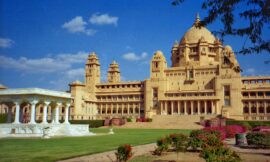The journey from Bam to Quetta is a captivating exploration of diverse landscapes, rich cultures, and historical significance. Stretching over 900 kilometers, this route weaves through the heart of Iran and into the rugged terrain of western Pakistan. Traveling from Bam, a city known for its ancient citadel and tragic earthquake history, to Quetta, the bustling capital of Balochistan province, unveils a tapestry of experiences that encapsulate the essence of this region.

As the journey begins in Bam, travelers are greeted by the haunting silhouette of the Bam Citadel against the desert sky. This imposing mud-brick fortress, dating back over two millennia, stands as a testament to the city’s storied past. Despite the devastation wrought by the 2003 earthquake, which left much of the citadel in ruins, ongoing restoration efforts have breathed new life into this UNESCO World Heritage site.
Leaving Bam behind, the road meanders through the arid plains of southeastern Iran, where the stark beauty of the desert landscape unfolds in all its glory. Sparse vegetation clings to the rugged terrain, offering a glimpse into the resilience of life in these harsh conditions. Along the way, nomadic tribes can be seen tending to their herds, preserving age-old traditions amidst the ever-shifting sands.
As the journey progresses, the landscape gradually transforms, giving way to the towering peaks of the Zagros Mountains. The road winds its way through steep valleys and rocky gorges, offering breathtaking vistas at every turn. Villages cling precariously to the mountainsides, their terraced fields a testament to human ingenuity in the face of nature’s challenges.
Crossing the border into Pakistan, the scenery undergoes another dramatic change as the barren deserts of Iran give way to the fertile plains of Balochistan. Quetta, the provincial capital, lies nestled amidst this verdant landscape, its bustling streets a vibrant tapestry of cultures and traditions.
Arriving in Quetta, travelers are immediately struck by the city’s bustling bazaars and lively atmosphere. The aroma of spices fills the air as vendors peddle their wares, while the sounds of Urdu, Pashto, and Balochi mingle in a cacophony of voices. The city’s rich multicultural heritage is evident at every turn, from its Mughal-era architecture to its bustling street markets.
One of Quetta’s most iconic landmarks is the Quaid-e-Azam Residency, the former residence of Pakistan’s founding father, Muhammad Ali Jinnah. This historic building, nestled amidst lush gardens, serves as a poignant reminder of the struggles and sacrifices that paved the way for the nation’s independence.
Beyond its historical significance, Quetta is also a gateway to some of the most breathtaking natural wonders in Pakistan. The nearby Hanna Lake, with its azure waters and verdant surroundings, offers a tranquil retreat from the hustle and bustle of city life. Meanwhile, the rugged beauty of the nearby Ziarat Valley beckons adventurers with its pristine wilderness and towering peaks.
In conclusion, the journey from Bam to Quetta is a captivating odyssey through some of the most diverse and culturally rich landscapes in the region. From the ancient citadel of Bam to the bustling streets of Quetta, this route offers a glimpse into the timeless beauty and enduring resilience of the people who call this land home. Whether exploring ancient ruins, traversing rugged mountains, or immersing oneself in the vibrant culture of the region, this journey is sure to leave a lasting impression on any traveler fortunate enough to embark upon it.



